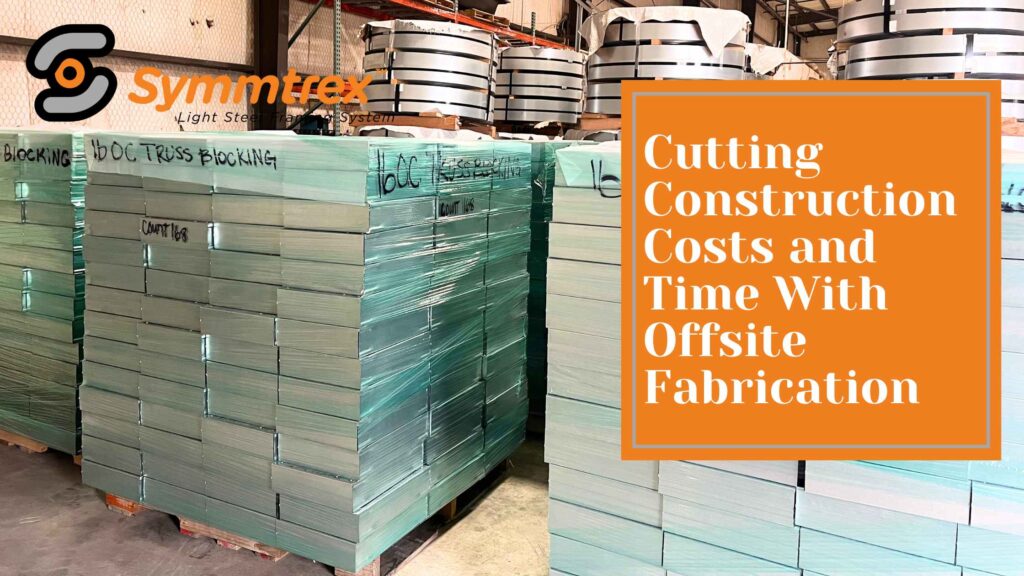In the ever-evolving construction industry, efficiency and cost-effectiveness are paramount. Traditional construction methods often fall short, plagued by delays, budget overruns, and inefficiencies. Enter offsite fabrication—a revolutionary approach reshaping how we build. By embracing offsite fabrication, builders and developers can significantly cut costs and construction time, ensuring projects are completed on schedule and within budget. This article explores how offsite fabrication is transforming the construction landscape.

What is Offsite Fabrication?
Understanding the Concept
Offsite fabrication involves manufacturing building components in a controlled factory environment before transporting them to the construction site for assembly. This method contrasts with traditional on-site construction, where materials are delivered and assembled piece by piece on location.
Key Benefits
Offsite fabrication offers numerous advantages over conventional building techniques:
- Precision: Factory-controlled conditions ensure high-quality, precise components.
- Speed: Accelerated production timelines reduce overall project duration.
- Cost Savings: Streamlined processes and reduced labor costs contribute to lower expenses.
How Offsite Fabrication Cuts Costs
Labor Efficiency
One of the most significant ways offsite fabrication reduces costs is through labor efficiency. In a factory setting, specialized labor can complete specific tasks more quickly and accurately than on-site labor. This specialization allows for:
- Reduced Labor Costs: Fewer workers are needed on-site, lowering overall labor expenses.
- Minimized Errors: Precision manufacturing reduces mistakes, lowering rework costs.
Material Optimization
Offsite fabrication also optimizes material usage. In traditional construction, material waste is a common issue due to inaccurate measurements and on-site mishandling. Conversely, offsite fabrication:
- Reduces Waste: Precise cutting and assembly processes result in minimal waste.
- Bulk Purchasing: Factories can purchase materials in bulk at lower prices, reducing overall material costs.
Shortened Project Timelines
By accelerating production and reducing on-site assembly time, offsite fabrication significantly shortens project timelines. The faster completion translates into:
- Lower Financing Costs: Reduced loan interest and financing charges due to shorter project durations.
- Decreased Overhead: Lowering costs associated with prolonged site management and security.
How Offsite Fabrication Saves Time
Concurrent Processes
Offsite fabrication allows for concurrent processes, meaning multiple project stages can occur simultaneously rather than sequentially. For example:
- Foundation Work and Manufacturing: While the foundation is being laid on-site, components are manufactured in the factory.
- Simultaneous Assembly: Once the foundation is ready, pre-fabricated components are swiftly assembled, reducing construction time.
Weather Independence
Weather conditions often delay traditional construction projects. Offsite fabrication mitigates this risk by conducting most of the work indoors. This advantage ensures:
- Consistent Production: Factory environments are unaffected by weather, maintaining steady progress.
- Reliability: On-site assembly occurs faster, as weather-related disruptions are minimized.
Streamlined Inspections
Offsite fabrication streamlines inspection processes. In traditional construction, inspections occur at various stages, potentially causing delays. With offsite fabrication:
- Factory Inspections: Quality checks are conducted in the factory, ensuring compliance before components reach the site.
- Faster Approvals: On-site inspections are quicker and less frequent, expediting project timelines.
Real-World Applications
Case Study: Modular Housing Projects
Modular housing projects are prime examples of offsite fabrication’s efficiency. In these projects, entire modules are built in factories and then assembled on-site. This approach has proven successful in:
- Urban Developments: Rapidly constructing affordable housing in densely populated areas.
- Disaster Relief: Providing quick and cost-effective housing solutions post-disasters.
Case Study: Commercial Buildings
Commercial buildings, including offices and retail spaces, benefit significantly from offsite fabrication. For instance:
- Office Complexes: Prefabricated components enable quick construction, allowing businesses to occupy spaces sooner.
- Retail Outlets: Faster construction ensures timely openings, capitalizing on market opportunities.
Future Trends in Offsite Fabrication
Technological Advancements
Technological advancements are continually enhancing offsite fabrication processes. Innovations such as Building Information Modeling (BIM) and automation are driving further efficiency gains. These technologies facilitate:
- Enhanced Design Accuracy: BIM allows for precise digital modeling, reducing errors and optimizing designs.
- Automated Production: Robotics and automation streamline manufacturing, increasing speed and precision.
Sustainability
Sustainability is becoming a critical focus in construction. Offsite fabrication contributes to sustainable practices by:
- Reducing Waste: Efficient material usage minimizes waste generation.
- Energy Efficiency: Factory-controlled environments can implement energy-efficient processes.
- Recycling: Leftover materials can be recycled more effectively in a factory setting.
Integration with Smart Technologies
The integration of smart technologies into offsite fabrication is on the horizon, promising even greater efficiencies. Potential developments include:
- IoT Integration: Internet of Things (IoT) devices can monitor production and assembly processes in real-time, ensuring optimal performance.
- AI-Driven Optimization: Artificial intelligence (AI) can analyze data to predict and mitigate potential issues, further streamlining construction.
Conclusion
Offsite fabrication is revolutionizing the construction industry by cutting costs and construction time. Its ability to enhance labor efficiency, optimize material usage, and accelerate project timelines positions it as a superior alternative to traditional construction methods. As technology continues to advance, offsite fabrication will likely become even more efficient, sustainable, and integrated with smart technologies. Embracing offsite fabrication today lays the groundwork for a future of faster, more cost-effective, and environmentally conscious construction.
Ready to transform your next project with offsite fabrication? Invest in the right tools and expertise to harness its full potential, ensuring your projects are delivered on time and within budget. The future of construction is here—embrace it with offsite fabrication.

